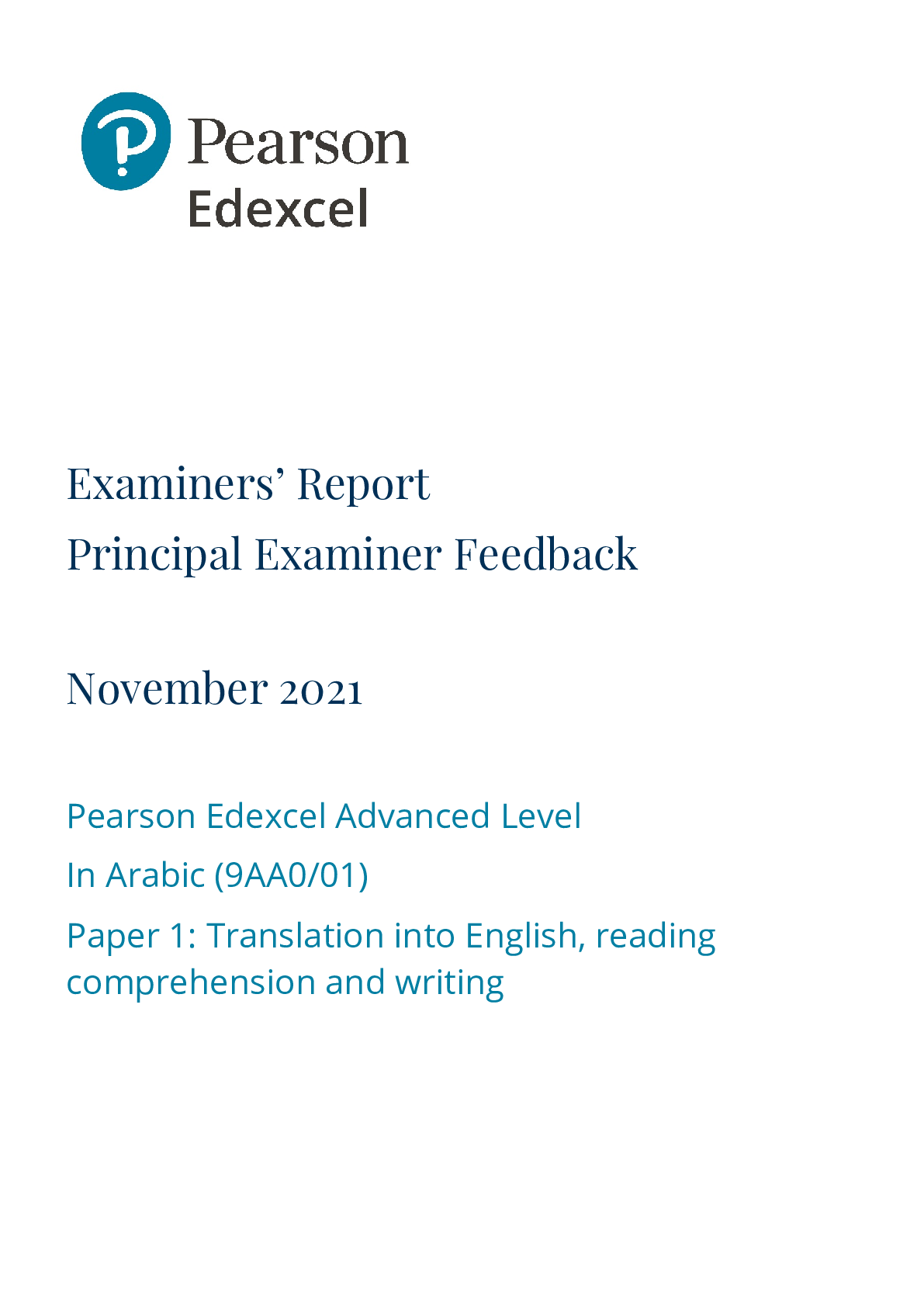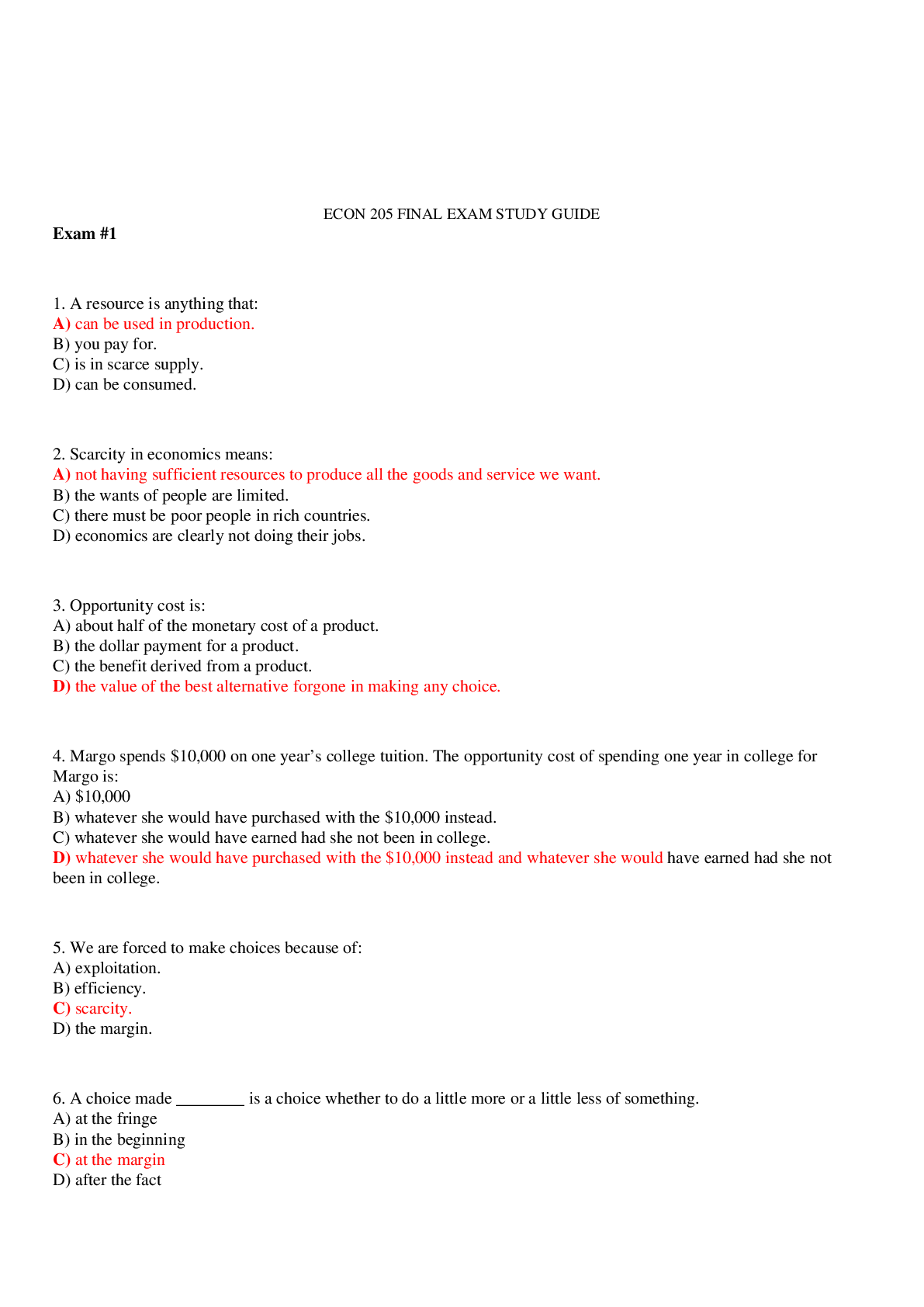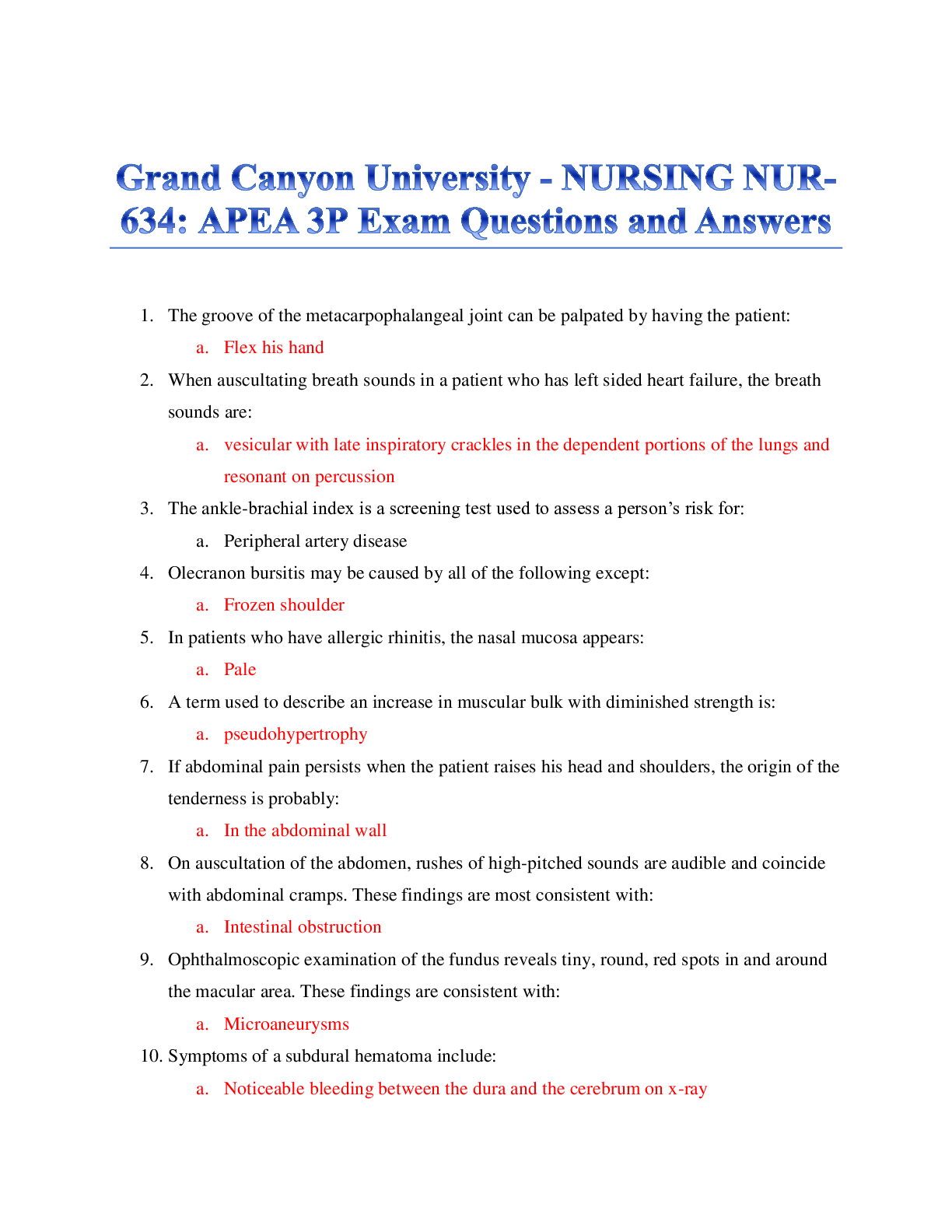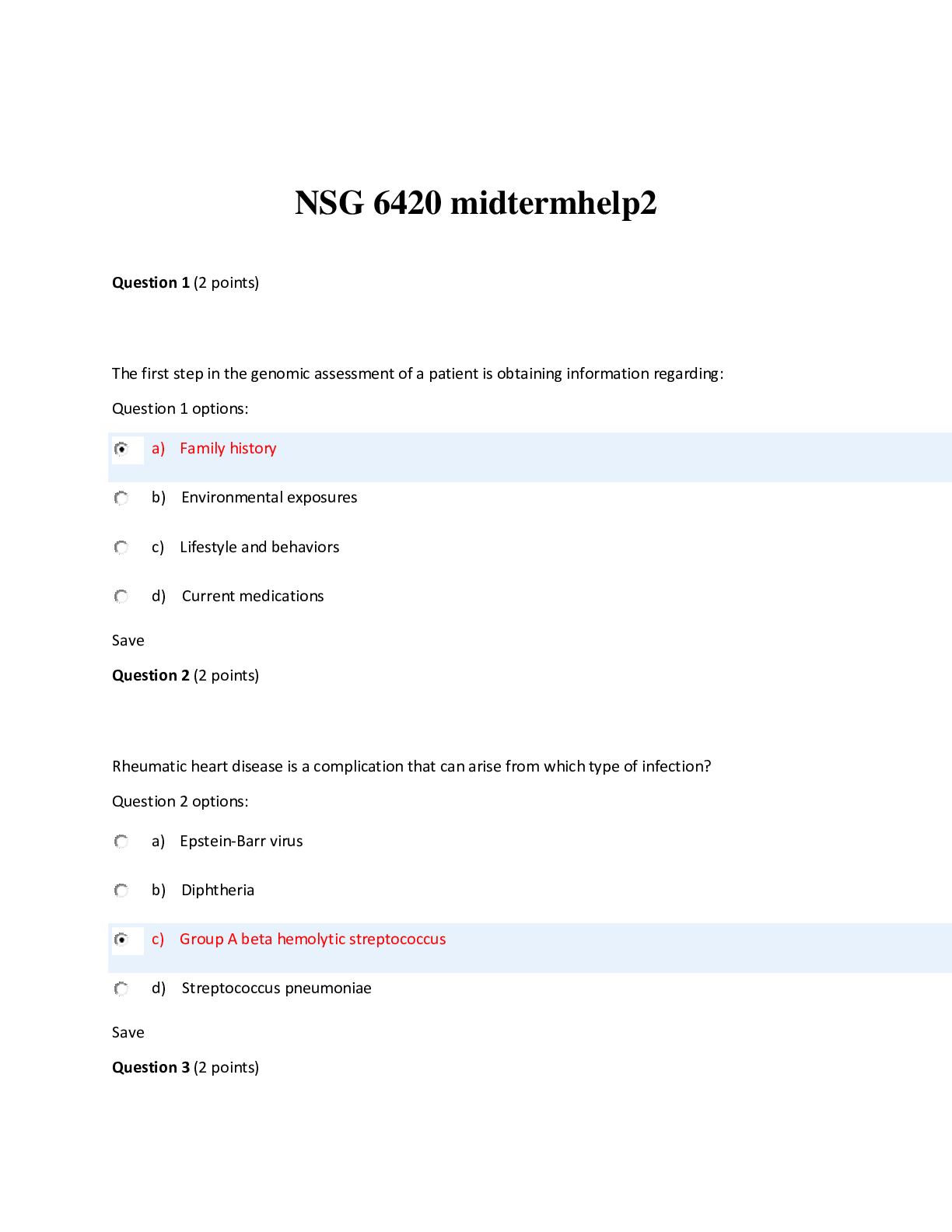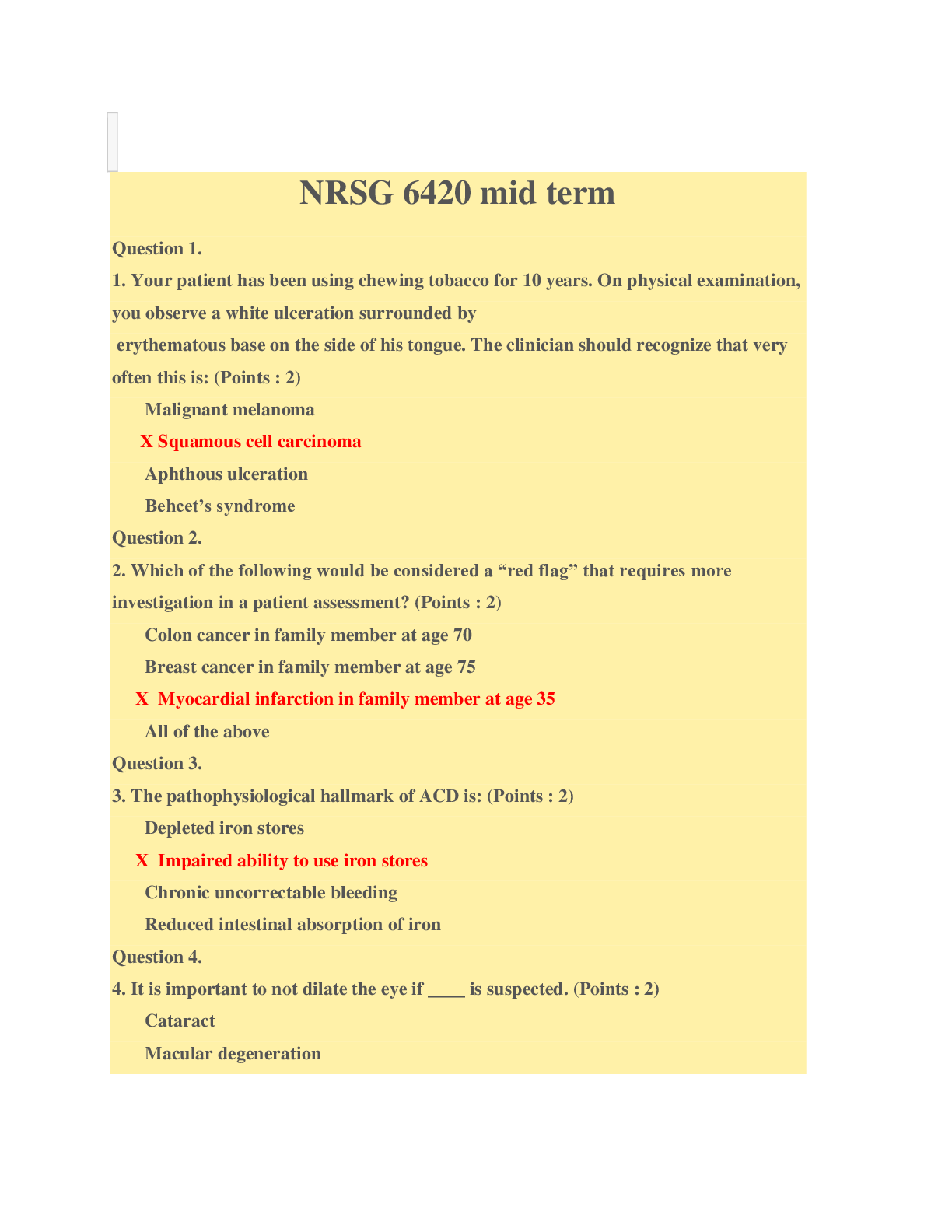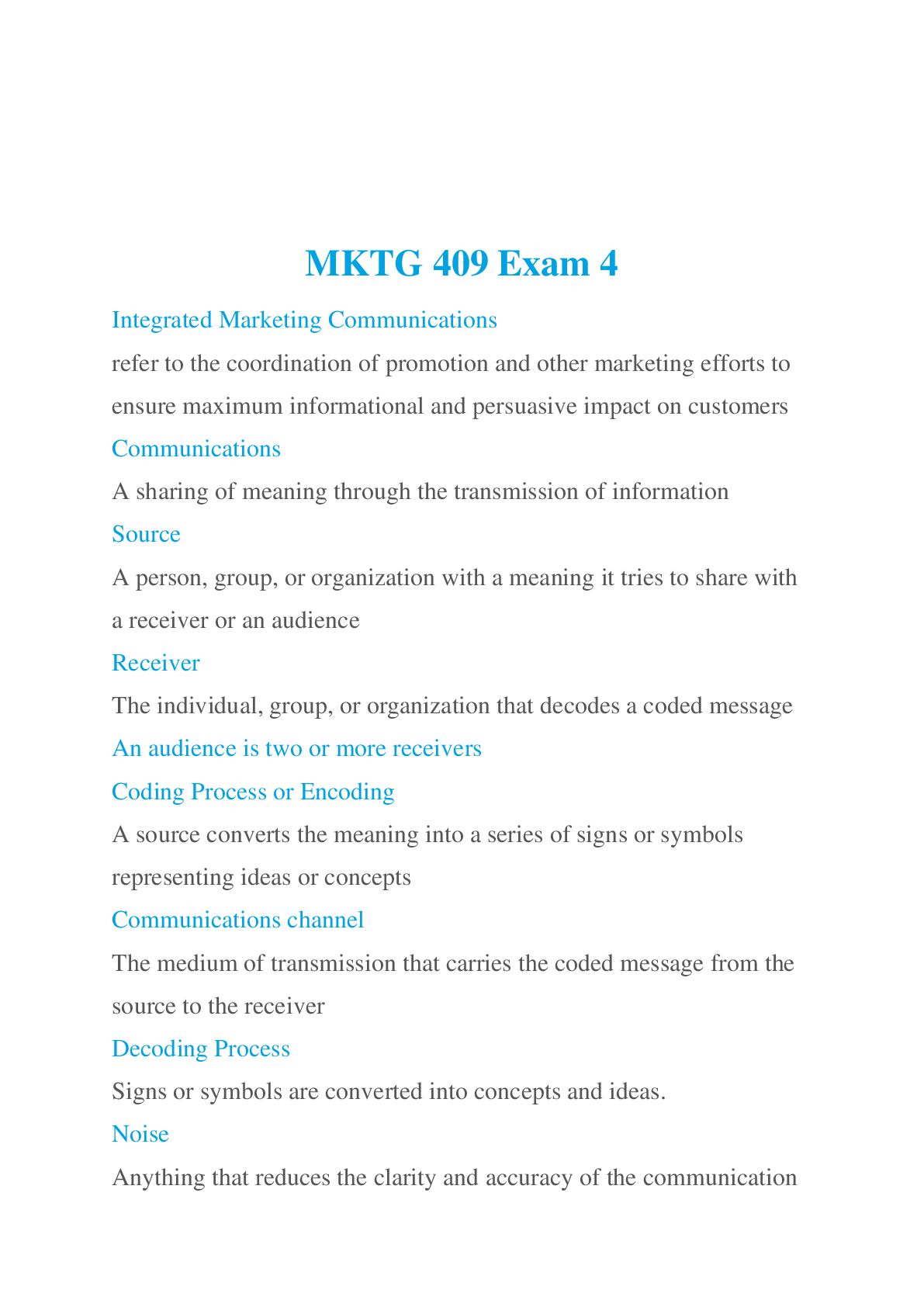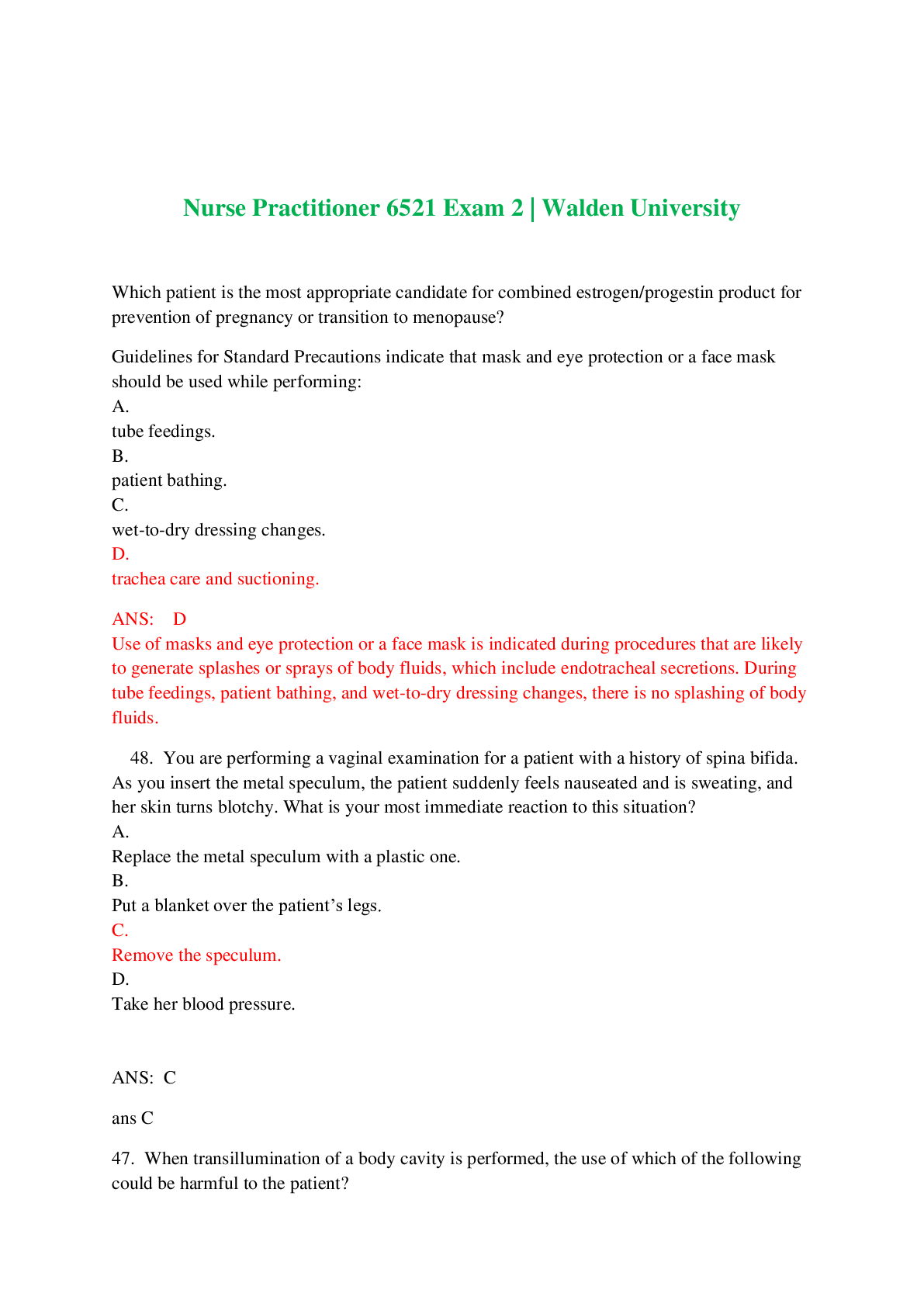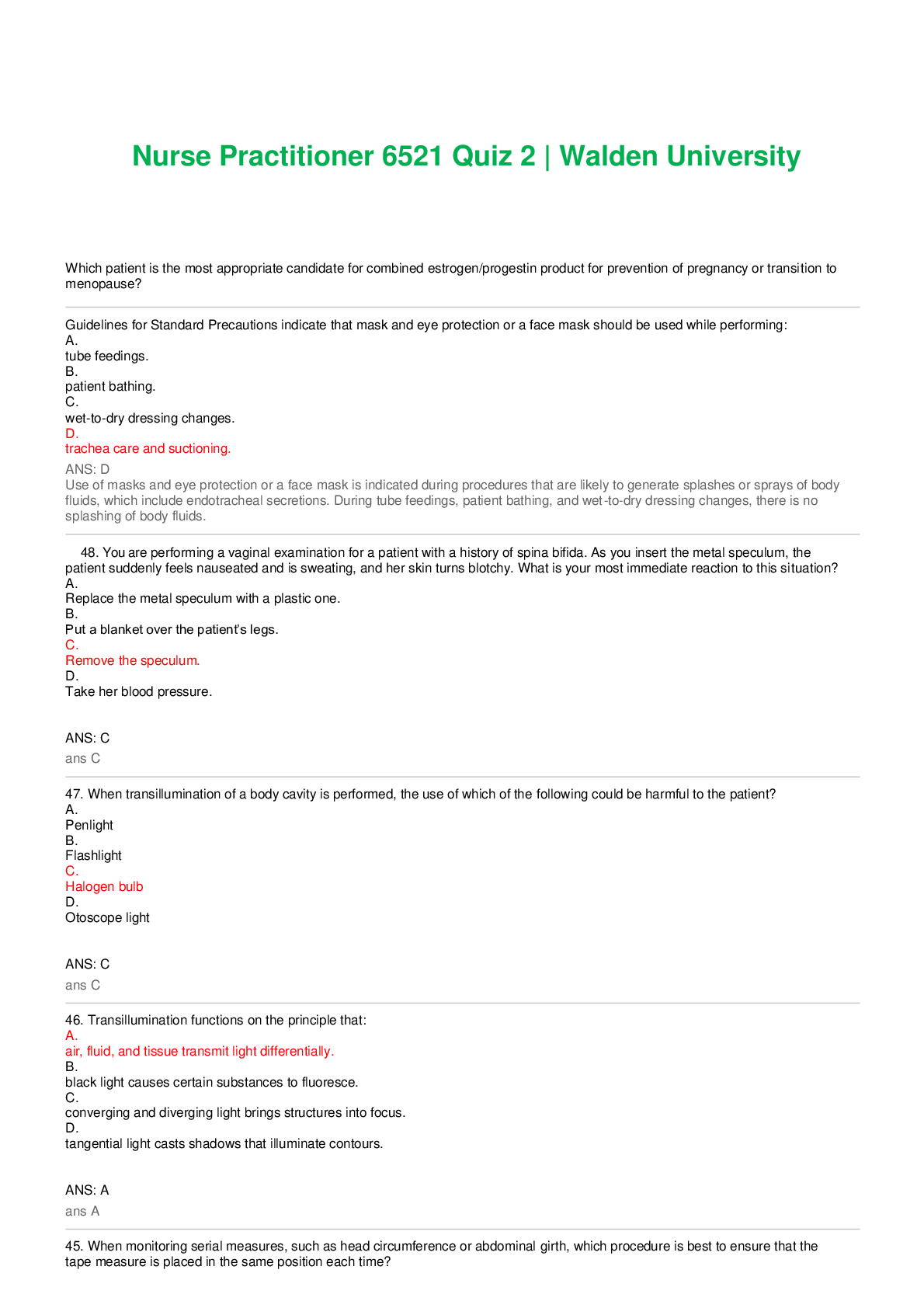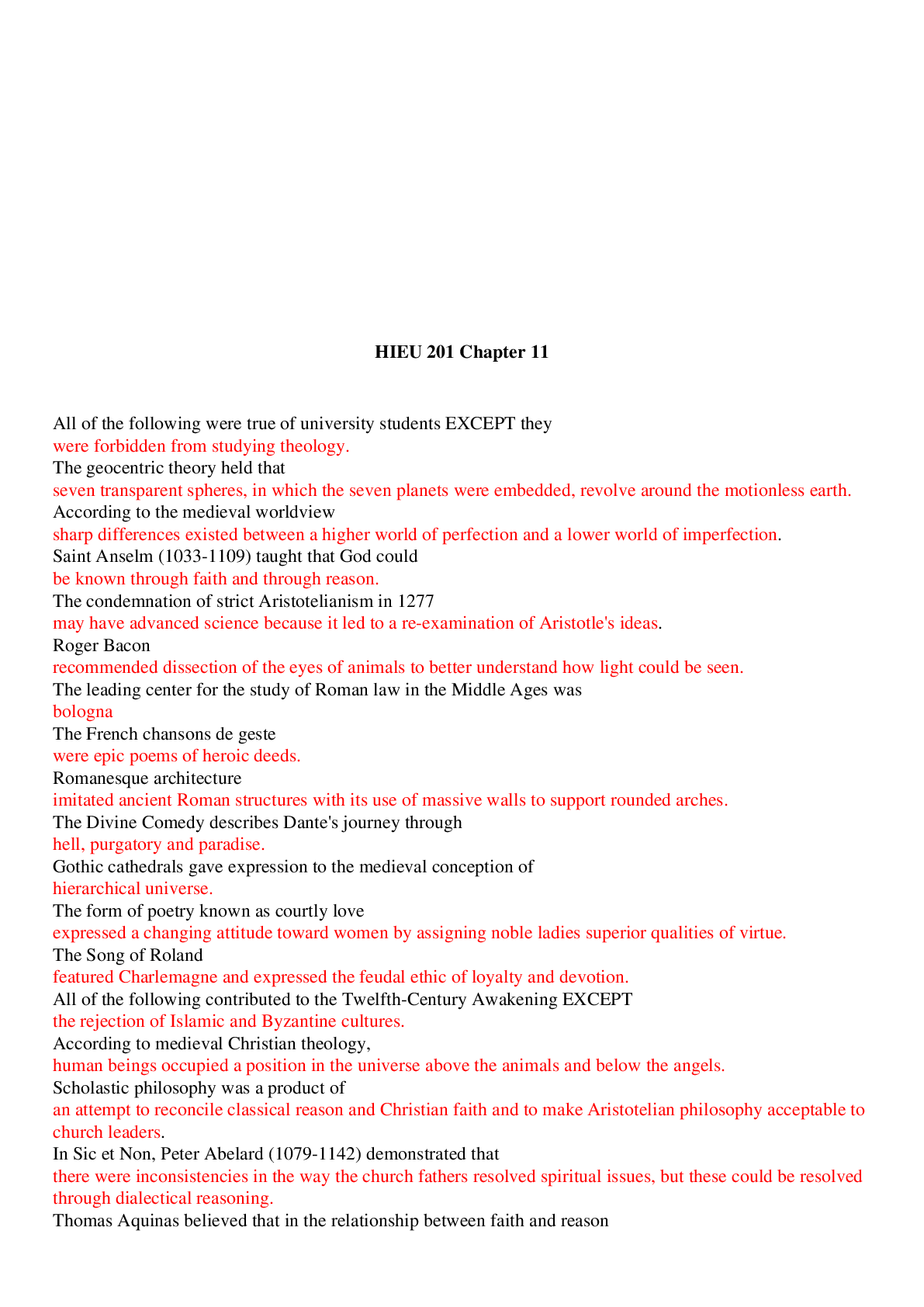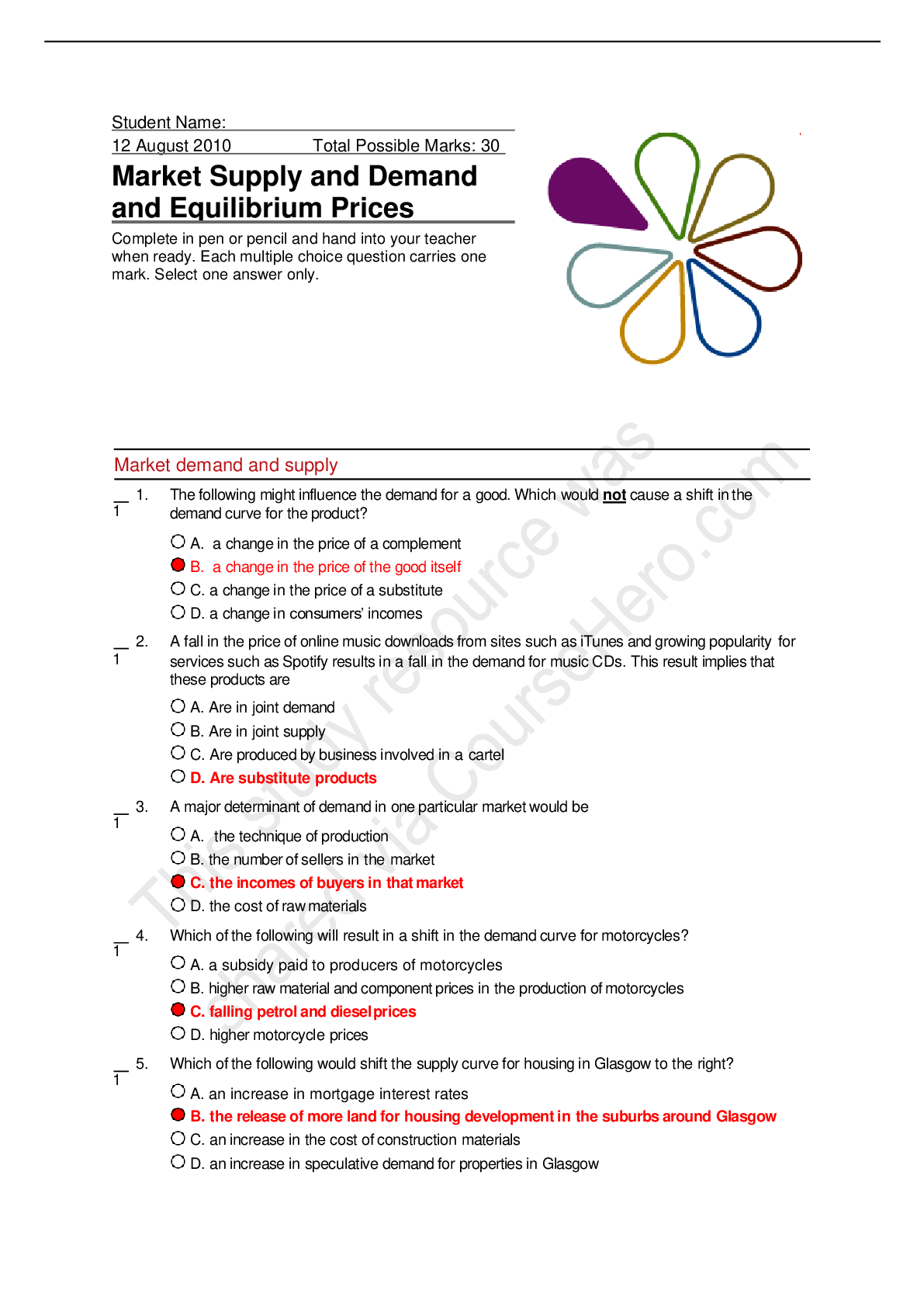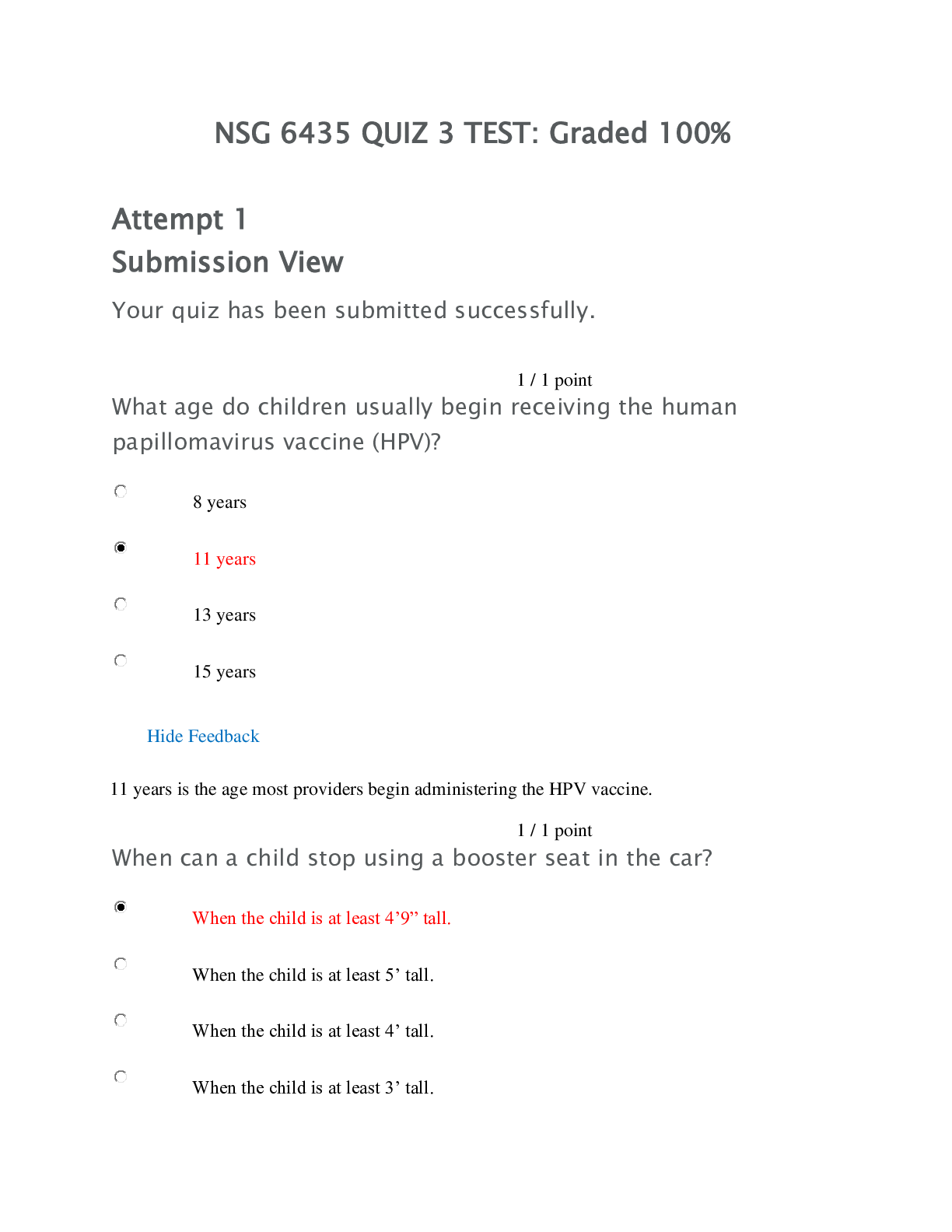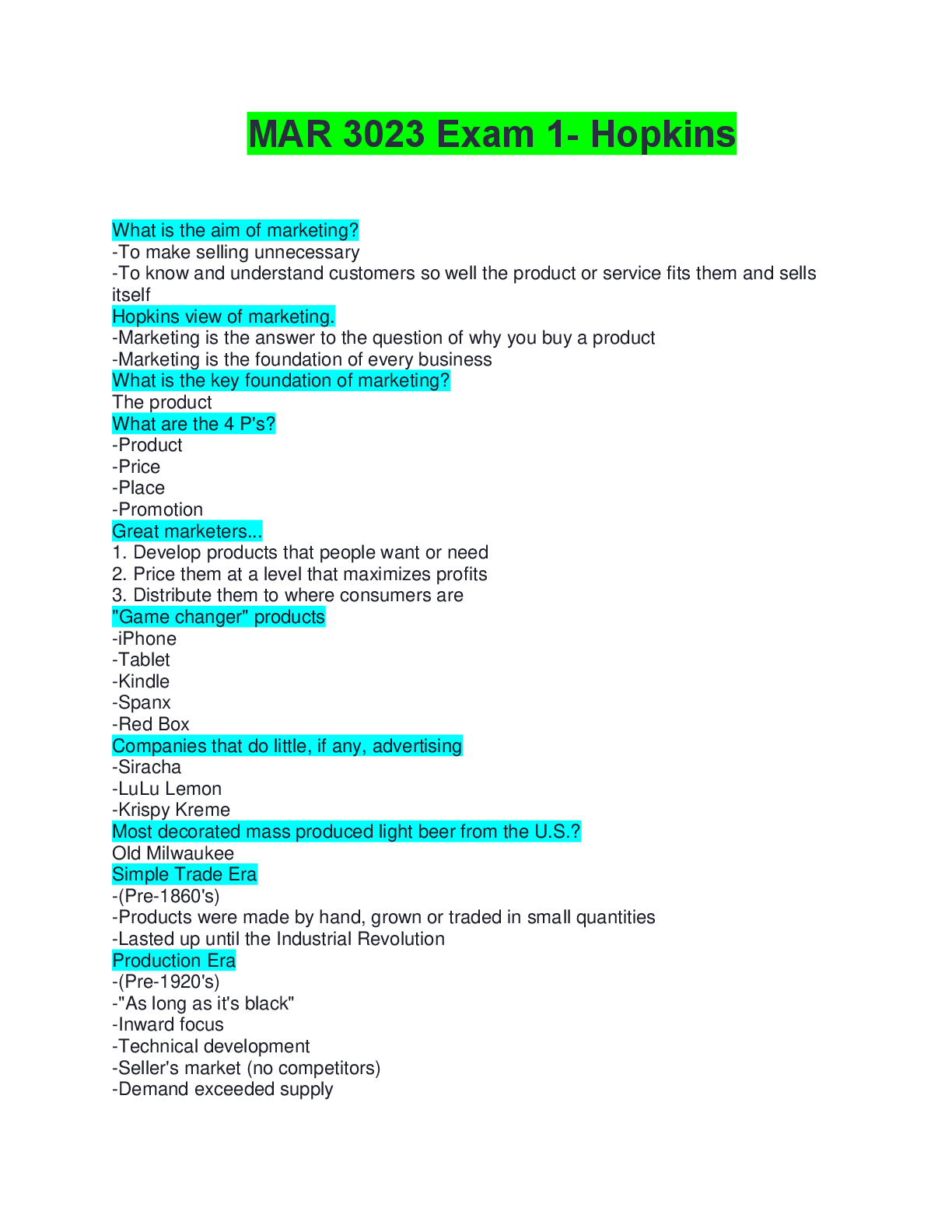APEA Questions and Answers
Document Content and Description Below
APEA Questions and Answers Question: A transient ischemic attack is: a transient episode of neurologic dysfunction by focal brain, spinal cord, or retinal ischemia, without acute infarction. C ... orrectan infarction of the central nervous system tissue that may be silent or symptomatic.the abrupt onset of motor or sensory deficits. Incorrectfocal or asymmetric weaknesses caused by central and peripheral nerve damage. Explanation: TIA is now defined as “a transient episode of neurological dysfunction caused by focal brain, spinal cord, or retinal ischemia, without acute infarction.” Ischemic stroke is “an infarction of central nervous system tissue” that may be symptomatic or silent. The other terms are not related to the new definitions. Question: A patient is asked to visually follow a finger through the cardinal fields of gaze. Which cranial nerves are being assessed? III, IVIII, IV, VI CorrectV, VI, VII Explanation: Visually following a finger through the cardinal fields of gaze is one way to assess the oculomotor (CN III), trochlear (CN IV) and abducens (CN VI) nerves. CN I is the olfactory nerve and assesses smell. CN II is the optic nerve and assesses visual acuity. CN V is the trigeminal nerve and assesses both sensory and motor functions. Question: Uncontrolled electrical activity in the brain, which may produce minor physical signs, thought disturbances, or disturbed motor activity is: dystonia.bradykinesia.tremor.seizure. Correct Explanation: A seizure is an uncontrolled electrical activity in the brain which may produce minor physical signs, thought disturbances, or disturbed motor activity, or a combination of symptoms. Dystonia is a neurological disorder that causes involuntary muscle spasms and twisting of the limbs. Bradykinesia is the term used to describe the impaired ability to adjust to one's body position. This symptom is noted in patients who have Parkinson's disease. A rhythmic oscillatory movement of a body part resulting from the contraction of opposing muscle groups is a tremor. Question: When evaluating the sensory system, testing the posterior columns tract would include assessing sensations of: position and vibration. Correctpain and temperature.deep touch. Incorrectdiscriminative sensations. Explanation: When evaluating the sensory system, testing the spinothalamic tracts would include assessing sensations of pain and temperature. Assessing position and vibration evaluate the posterior columns. Light touch assesses both the spinothalamic and posterior column tracts. To assess discriminative sensation, both the spinothalamic and posterior columns tracts as well as the cortex would be assessed. Question: Physical exam of a well two-week-old infant reveals a little dimple with a small amount of hair just above the sacral area. This could be: an unusual finding but within normal limits. Incorrecthirsutism.Arnold -Chiari malformation. spina bifida occulta. Correct Explanation: There are four types of spina bifida: occulta, closed neural tube defects, meningocele, and myelomeningocele. Occulta is the mildest and most common form in which one or more vertebrae are malformed. The name “occulta,” which means “hidden,” indicates that a layer of skin covers the malformation, or opening in the vertebrae. This form of spina bifida, present in 10-20 percent of the general population, rarely causes disability or symptoms. Closed neural tube defects are often recognized early in life due to an abnormal tuft or clump of hair or a small dimple or birthmark on the skin at the site of the spinal malformation. Meningocele and myelomeningocele generally involve a fluid-filled sac—visible on the back—protruding from the spinal canal. In meningocele, the sac may be covered by a thin layer of skin. In most cases of myelomeningocele, there is no layer of skin covering the sac and an area of abnormally developed spinal cord tissue is usually exposed. Hirsutism is an excessive amount of hair on the body usually caused by a hormonal imbalance. An Arnold-Chiari malformation is a cyst-like formation in the fourth ventricle, cerebellum or brainstem. Question: A female patient complains of weakness in her arm when combing her hair. This finding could be suggestive of which type of weakness pattern? Proximal CorrectDistal IncorrectSymmetricAsymmetric Explanation: To identify proximal weakness, ask about difficulty with movements such as combing hair, reaching up to a shelf, getting up out of a chair, or climbing a high step. Question: What geriatric condition is characterized by normal alertness but progressive global deterioration of cognition in multiple domains? DeliriumCognitive impairmentParkinson's diseaseAlzheimer's disease Correct Explanation: Alzheimer's disease is a geriatric condition in which normal alertness is present but progressive global deterioration of cognition occurs in multiple domains, including short-term memory, but with sparing of memory for remote events, subtle language errors, visuospatial perceptual difficulties, and changes in executive function, or the ability to perform sequential tasks such as instrumental activities of daily living (IADLs). Delirium is a serious disturbance in a person's mental abilities that results in a decreased awareness of one's environment and confused thinking. Cognitive impairment is an intermediate stage between the expected cognitive decline of normal aging and the more serious decline of dementia. Parkinson's disease is a progressive disorder of the nervous system that affects movement. Question: When assessing coordination of muscle movement, four areas of the nervous system function in an integrated way. These areas include the motor, cerebellar, the vestibular, and the sensory systems. Which system coordinates position sense? Motor systemCerebellar systemVestibular system IncorrectSensory system Correct Explanation: Coordination of muscle movement requires that four areas of the nervous system function in an integrated way: motor system for muscle strength, cerebellar system for rhythmic movements and steady posture, vestibular system for balance and coordinating eye, head, and body movements, and sensory system for position sense. Question: A band of skin innervated by the sensory root of a single spinal nerve is termed a: peripheral nerve field.dermatome. Correctsynapseasterixis. Explanation: A band of skin innervated by the sensory root of a single spinal or dorsal nerve root is termed a dermatome. A peripheral nerve field refers to an area of the skin innervated by a single nerve and is described as cutaneous nerve distribution. A synapse is a structure that permits a neuron to pass an electrical or chemical signal to another cell. Asterixis refers to an abnormal tremor consisting of involuntary jerking movements, especially in the hands, frequently occurring with impending hepatic coma and other forms of metabolic encephalopathy. This is also known as flapping tremor. Question: An 8-month-old with a significant head lag would suggest the need for: exercises that strengthen the neck muscles.a follow-up visit in 2 months.a neurological evaluation. Correctan orthopedic referral. Explanation: A baby typically should be able to control the neck muscles by around 4 months of age, so that when pulling from a lying to a sitting position the head should remain in line with the torso and not flop back. Delays in reaching this developmental milestone have been observed in premature babies and in those with cerebral palsy; all others should be referred to a pediatric neurologist for further evaluation. The other choices do not address the issue or the cause. Early interventions result in better outcomes. [Show More]
Last updated: 3 years ago
Preview 1 out of 34 pages
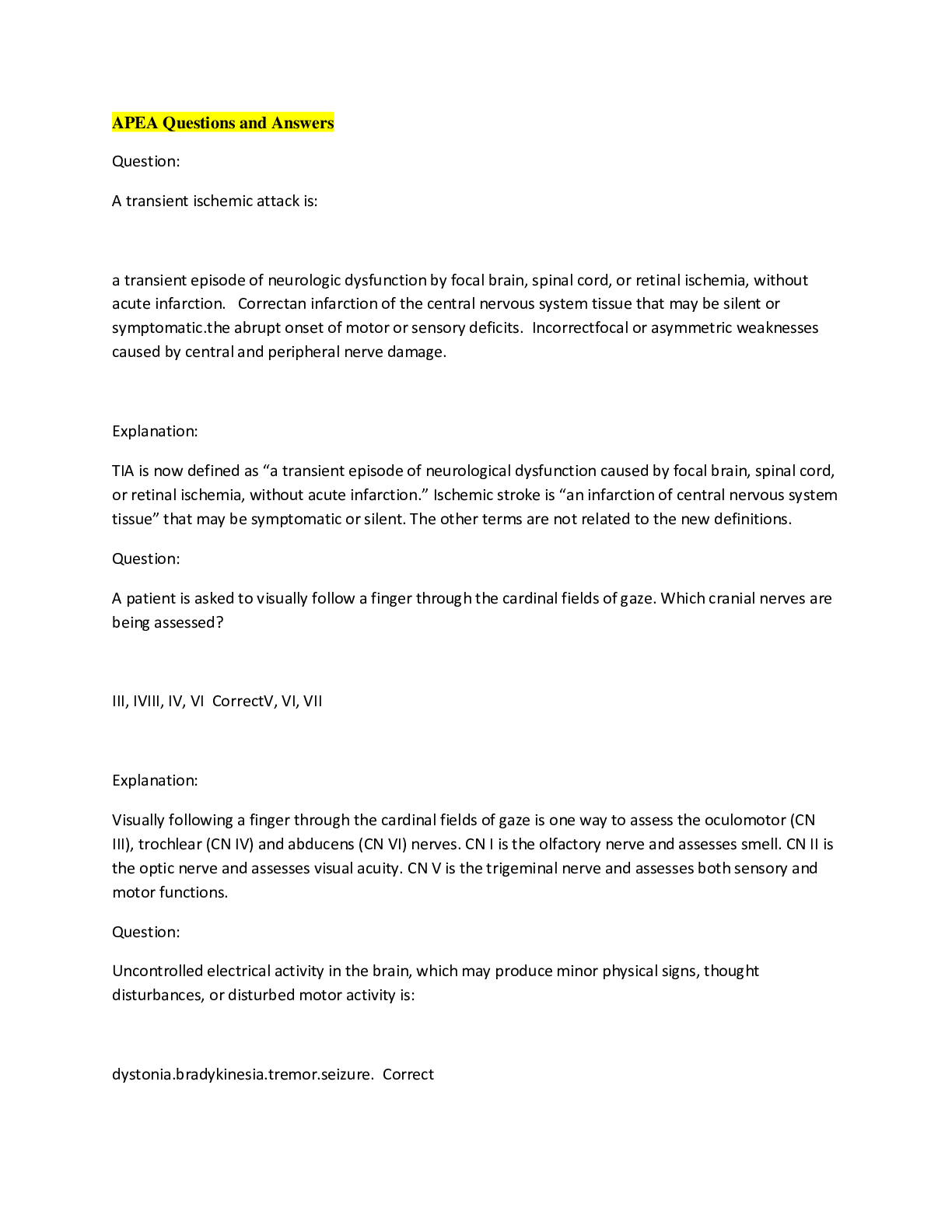
Buy this document to get the full access instantly
Instant Download Access after purchase
Buy NowInstant download
We Accept:

Reviews( 0 )
$20.50
Can't find what you want? Try our AI powered Search
Document information
Connected school, study & course
About the document
Uploaded On
Feb 01, 2021
Number of pages
34
Written in
All
Additional information
This document has been written for:
Uploaded
Feb 01, 2021
Downloads
0
Views
111












